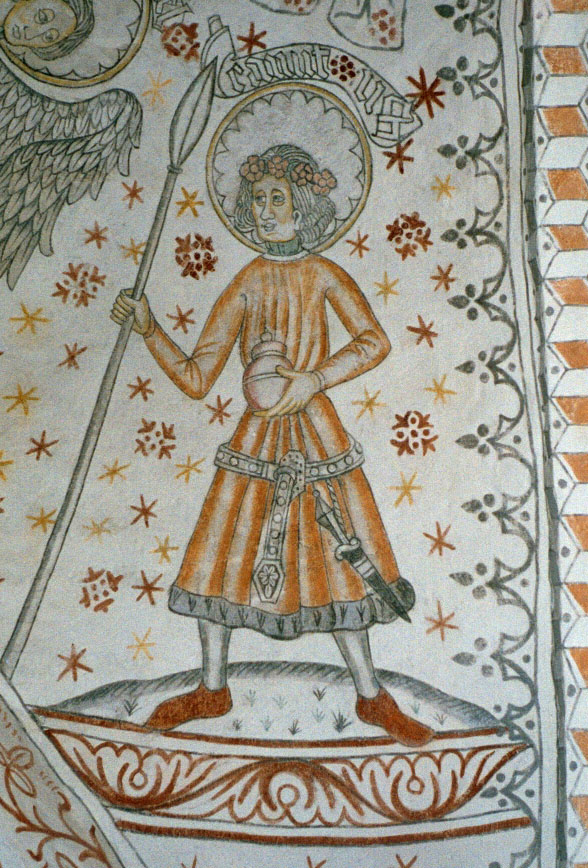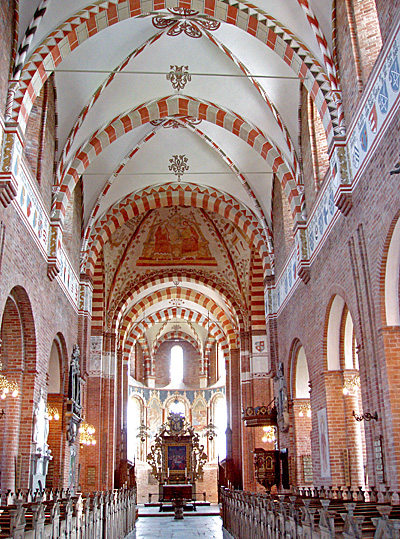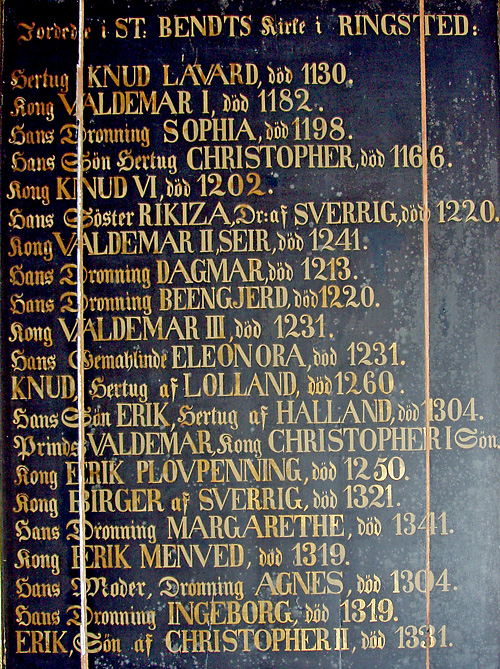© Unofficial Royalty 2025

Statue of Robert the Bruce in Stirling, Scotland; Credit – Wikipedia by Ally Crockford – Own work
June 7, 1329 – Death of Robert I, King of Scots (Robert the Bruce) at the Manor of Cardross, near Dumbarton, Scotland; buried at Dunfermline Abbey in Fife, Scotland
Robert the Bruce is a Scottish national hero and was King of Scots during the First War of Scottish Independence. The Scots refused to tolerate English rule, resulting in the Wars of Scottish Independence, a series of military campaigns fought between Scotland and England, first led by William Wallace and, after his execution, led by Robert the Bruce. Robert the Bruce, as Earl of Carrick and 7th Lord of Annandale, held estates and property in Scotland, a barony and some minor properties in England, and a strong claim to the throne of Scotland. On March 27, 1306, Robert the Bruce was proclaimed Robert I, King of Scots, and the crown was placed on his head by Isabella MacDuff, Countess of Buchan. According to tradition, the ceremony of crowning the monarch was performed by a representative of Clan MacDuff.
Unofficial Royalty: Robert I, King of Scots
June 7, 1394 – Death of Anne of Bohemia, Queen of England, first wife of King Richard II, at Sheen Palace in Surrey, England; buried at Westminster Abbey in London, England
In June 1394, Anne became ill with the plague while at Sheen Palace with her husband. She died three days later on June 7, 1394, at the age of 28. King Richard II was so devastated by Anne’s death that he ordered Sheen Palace to be destroyed. For almost 20 years, it lay in ruins until King Henry V started a rebuilding project in 1414. Richard II gave Anne a magnificent funeral. The funeral procession went from Sheen Palace to Westminster Abbey, lit by candles and torches made from wax specially imported from Flanders. Those in the procession were dressed all in black and wore black hoods. King Richard was angered when Richard FitzAlan, 11th Earl of Arundel, arrived late for the funeral. The king struck the earl in the face with his scepter.
Unofficial Royalty: Anne of Bohemia, Queen of England
June 7, 1840 – Birth of Princess Charlotte of Belgium, Empress Carlotta of Mexico, daughter of King Leopold I of the Belgians, wife of Emperor Maximilian I of Mexico (born an Archduke of Austria), at the Royal Castle in Laeken, Brussels, Belgium
Full name: Maria Charlotta Amelia Augusta Victoria Clementina Leopoldina
In 1861, Charlotte’s husband, Archduke Maximilian of Austria, brother of Emperor Franz Joseph I of Austria, accepted the offer of becoming Emperor of Mexico. The liberal forces led by Benito Juárez, the former president whom the French had deposed, refused to recognize his rule. There was continuous warfare between the French troops and the forces of Juárez, who wanted a republic. Maximilian was condemned to death, and on June 19, 1867, he was executed by a firing squad. After her return to Belgium, Charlotte developed a mental illness and was declared insane.
Unofficial Royalty: Princess Charlotte of Belgium, Empress Carlotta of Mexico
June 7, 1840 – Death of Friedrich Wilhelm III, King of Prussia, in Berlin, Kingdom of Prussia, now in Brandenburg, Germany; buried in the Mausoleum in the garden of Charlottenburg Palace in Berlin
After the early death of his first wife, Luise of Mecklenburg-Strelitz, the mother of his nine children, Friedrich Wilhelm III instituted an order that her family should mourn her death each year on July 19, the anniversary of her death. Luise was buried in the garden of Charlottenburg Palace, where her husband had a mausoleum built over her grave. Friedrich Wilhelm III survived his first wife by thirty years and was buried by her side. His second wife, Countess Auguste von Harrach, survived him by 33 years and is also buried in the mausoleum, although she has no stone or marker.
Unofficial Royalty: King Friedrich Wilhelm III of Prussia
June 7, 1876 – Death of Queen Josefina of Sweden, born Joséphine of Leuchtenberg, wife of King Oscar I of Sweden and Norway in Stockholm, Sweden; buried at Riddarholmen Church in Stockholm, Sweden
Queen Josefina was the daughter of Eugène de Beauharnais, the son of Empress Joséphine (Napoleon Bonaparte‘s first wife) from her first marriage to Alexandre, Vicomte de Beauharnais, who had been guillotined during the French Revolution. Her mother was Princess Augusta of Bavaria, daughter of King Maximilian I Joseph of Bavaria. In 1823, Josefina married King Oscar I of Sweden and Norway. The couple had five children, including two Kings of Sweden and Norway. Josefina brought to Sweden jewelry that had belonged to her grandmother, Empress Josephine, still worn by the Swedish and Norwegian royal families. The Cameo Tiara, originally made for her grandmother, Joséphine, Empress of the French, was worn by her descendant, Crown Princess Victoria of Sweden, at her wedding in 2010. Photos of both women wearing the Cameo Tiara are in the article linked below. Josefina survived her husband for 17 years and died in Stockholm on June 7, 1876, at age 69. She remained Roman Catholic, was given a Catholic funeral, and was buried with her husband at Riddarholmen Church.
Unofficial Royalty: Joséphine of Leuchtenberg, Queen Josefina of Sweden
June 7, 1907 – Birth of Prince Sigvard of Sweden, later Sigvard Bernadotte, Count of Wisborg, son of King Gustaf VI Adolf of Sweden, at Drottningholm Palace in Drottningholm, Sweden
Full name: Sigvard Oscar Fredrik
Sigvard lost his style His Royal Highness and his title of Prince of Sweden when he married a commoner. In 1951, Grand Duchess Charlotte of Luxembourg conferred on him the title of Count of Wisborg. Sigvard died in 2002, in Stockholm, Sweden. He was 94 years old, and for the last eight years of his life, he was the eldest living great-grandchild of Queen Victoria and her longest-lived descendant.
Unofficial Royalty: Sigvard Bernadotte, Count of Wisborg
June 7, 1960 – Birth of Prince Radu of Romania, husband of Margareta, Custodian of the Crown of Romania, born Radu Duda in Iaşi, Romania
Radu Duda is the husband of Margareta, Custodian of the Crown of Romania, the eldest of the five daughters of the late former King Michael I of Romania, who abdicated in 1947 when Romania ceased to be a monarchy. Margareta and Radu live at the Elisabeta Palace in Bucharest, Romania, and undertake public engagements in Romania and in other countries that help contribute to the successful modernization of Romania, reconcile with the past, and link Romania to other countries.
Unofficial Royalty: Prince Radu of Romania
June 7, 1969 – Birth of Prince Joachim of Denmark, son of Queen Margrethe II of Denmark, at the Rigshospitalet in Copenhagen, Denmark
Full name: Joachim Holger Valdemar Christian
Joachim is the younger of the two sons of Queen Margrethe II of Denmark. In 1995, he married Alexandra Manley. The couple had two sons and divorced in 2005. Joachim married Marie Cavallier in 2008, and they have one son and one daughter. In September 2020, Prince Joachim started work as the defense attaché at the Danish Embassy in Paris, France. With the appointment, Joachim received the permanent rank of brigadier general. During the summer of 2023, Joachim and his family moved to Washington, DC, in the United States, where he works as the defense attaché at the Danish Embassy.
Unofficial Royalty: Prince Joachim of Denmark
June 7, 2002 – Death of Princess Lilian of Belgium, Princess de Réthy, born Lilian Baels, second wife of King Leopold III of the Belgians, at the Château d’Argenteuil, near Waterloo, Belgium; buried at Royal Vault at the Church of Our Lady in Laeken, Brussels, Belgium
Despite surviving her husband by nearly 20 years, it was at his funeral that Princess Lilian made her last official public appearance. She spent the remaining years of her life pursuing her interests in medicine (having established a Cardiology Foundation in 1958 following her son Alexandre’s heart surgery the previous year in the United States) and editing her husband’s memoirs “Pour l’Histoire” (For History), published in 2001. Princess Lilian’s funeral was held at the Church of Our Lady of Laeken, attended by the entire Belgian royal family except for her elder daughter, Marie-Christine, who had completely severed all ties with her family. Princess Lilian was interred in the Royal Crypt, beside her husband and his first wife, Queen Astrid, who tragically died at a young age in a car accident.
Unofficial Royalty: Princess Lilian, Princess de Réthy
This article is the intellectual property of Unofficial Royalty and is NOT TO BE COPIED, EDITED, OR POSTED IN ANY FORM ON ANOTHER WEBSITE under any circumstances. It is permissible to use a link that directs to Unofficial Royalty.













